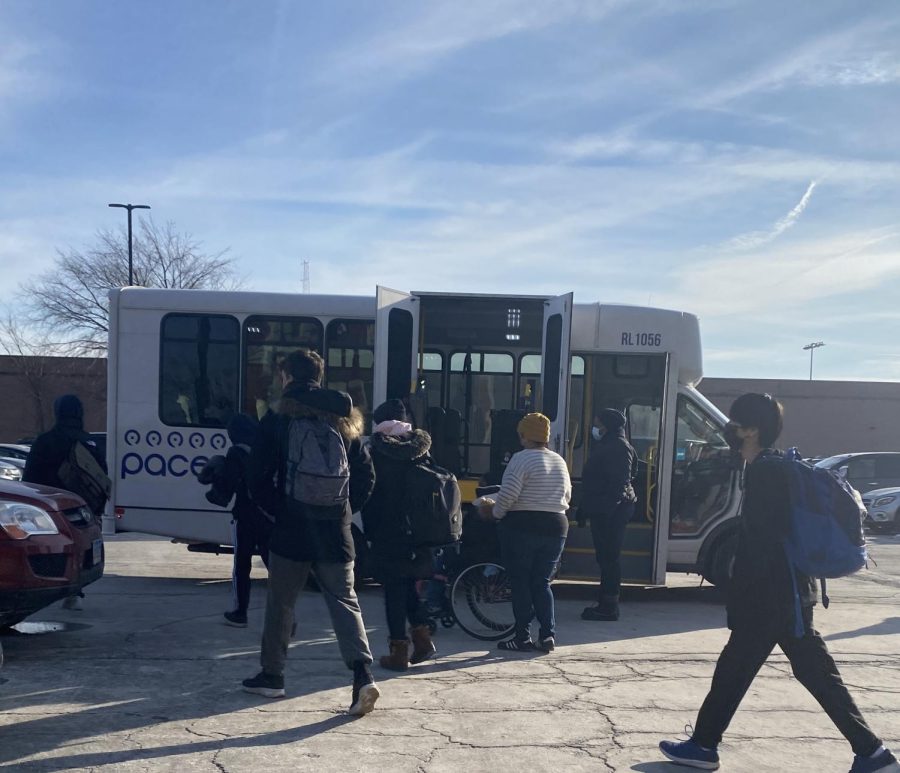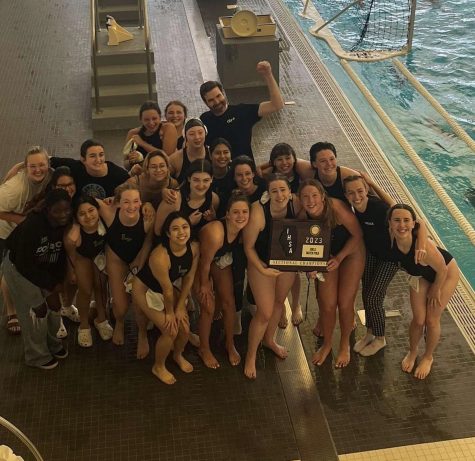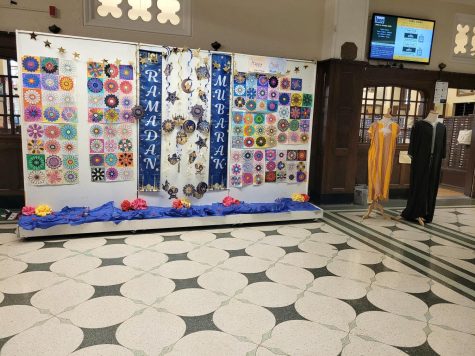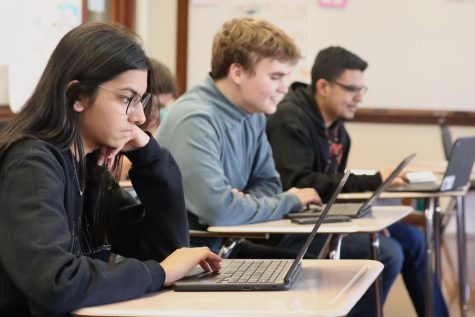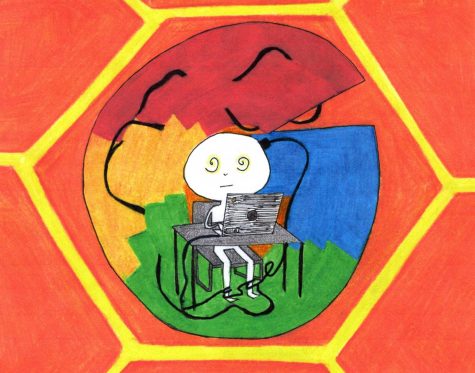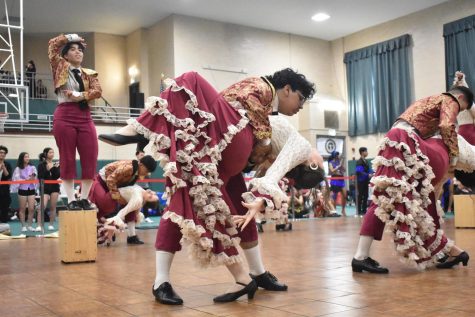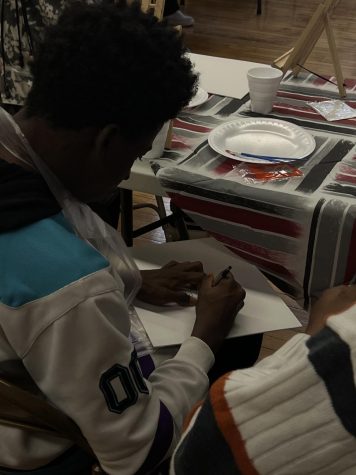Lane’s cluster program hit hard by recent transportation labor shortages
Transportation aide assists cluster program student in wheelchair while getting on a Pace transportation van.
February 13, 2022
With over 60 students, the cluster program at Lane Tech is specifically for special needs education. But with recent labor shortages, transportation to school has been hindered — forcing kids to stay at school late or, in some cases, to miss a year of school entirely.
According to the cluster program webpage on Lanetech.org, students in the cluster program are on a curriculum to fit the needs of their disabilities. They take core classes such as science and English but at a pace and level that fits each student best. The program was designed to help create inclusion and equal opportunity in the school. However, recent driver shortage issues have caused disruptions in these students’ education according to Anna Mullin, chair of the cluster program.
School bus services have been the primary form of transportation for special needs students to get to school each day. But since the start of the school year, according to National Public Radio, a nationwide shortage of bus drivers has resulted in many bus routes being cut off, forcing families to find unique solutions.
“We were informed initially that many of our routes would be arriving early or late because they were trying to double book with routes from other schools,” Mullin said. “[Now] less than ten students from the cluster program are receiving transportation services on a consistent basis.”
As of October, in CPS as a whole, over 2,400 special education students who require transportation services as stated in their Individualized Education Plans (IEPs) do not have it, according to The Washington Post.
Students who live near each other are placed together on bus routes, but only two of Lane’s routes are serviced, according to cluster program teacher Katherine Ellsworth.
Ellsworth said some buses don’t pick up the students from school until after 4:30 p.m., forcing the students to stay at school late some days.
“A lot of those students rely on a set schedule and they thrive on routine, so it’s really tough for them,” Ellsworth said.
If students are unable to find ways to self-transport, CPS has given them the option to opt out of school for the entire year, and families will be given $500 per month in this case in order to compensate for time taken off work. Ellsworth said that at least six Lane students have opted out completely. Students who do opt out of returning to in-person school are not offered remote instruction if the family chooses to keep their student home. This means they are not receiving any education due to the inability to get to school without a bus route.
“They have to find alternate caregivers and someone who’s familiar with their kid to stay home with them all day,” Ellsworth said.
While the majority of Lane’s student body is able to utilize public transportation on a daily basis, students in the cluster program do not have the same opportunity. Physical and neurological differences make it difficult for these students to travel via public transportation, especially for those traveling further distances. Mullin said that regardless of the struggles, families are still finding ways to use public transportation.
“Some parents are riding CTA with their students, going back home and then coming back on CTA to pick them up,” Mullin said.
Other family members have been helpful throughout this process, according to Mullin.
“Some parents have utilized family members, cousins, grandparents, aunts and uncles to help with transportation,” Mullin said.
Others are utilizing services like Uber, Mullin said, but costs add up, especially for those requiring wheelchair-accessible vehicles. Pace transportation is another service being used, as they cater specifically to individuals with disabilities, but once again, costs add up quickly with these types of transportation services.
CPS’s transportation department has even commissioned taxi drivers and aides to take some students to and from school, according to Mullin.
“At the beginning of the year we had a lot of upset parents,” Ellsworth said.
This was mainly due to the fact that parents have to take time off their jobs in order to work around these new changes, as well as financial struggles that have come along with this, Ellsworth said.
To compensate for the financial burden that the bussing shortages have placed on many families, CPS has provided a form of reimbursement.
“They’re giving families $500 per month who have had to self-transport,” Mullin said.
CPS attempted a solution of their own when they gave $30 million to various school bus companies in 2020 with the hopes of keeping drivers available. However, these companies laid off more than 600 bus drivers regardless, according to the Chicago Sun-Times, creating severe driver shortages and leaving many families feeling hopeless.
The bus issue is affecting schools all around Chicago, according to Ellsworth, but is impacting special education students the most. Despite the effort many families have put in to work around this problem, there is only so much that can be done to make up for the lost bus routes.
“It’s all over the district,” Ellsworth said. “We’re fortunate that we even have two routes.”

